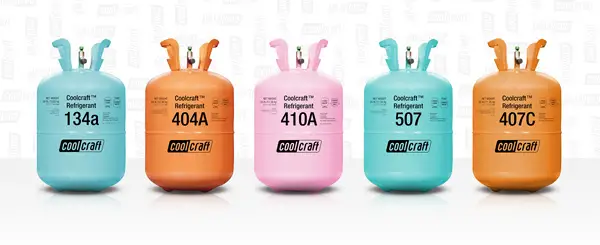Vapor refrigerant charging is a must-know for every homeowner who wants a cool and comfy home during the hot summer months. It’s all about getting the right amount of refrigerant into your HVAC system, and trust us, it makes a huge difference.
Did you know there are two ways to charge your system – vapor charging and liquid charging? Well, we’re here to talk about the former and help you understand its importance. So, let’s dive in and learn how to keep our homes chill.

Table of Contents
Components and Tools for Vapor Refrigerant Charging
Necessary Components
You don’t need a ton of stuff to charge your HVAC system with refrigerant. Just gather these essential components:
- Refrigerant cylinders (the stuff that cools your home)
- Your trusty HVAC system with service ports
- A manifold gauge set (to monitor pressure)
- Vacuum pump (for pulling a vacuum)
- Service hoses (to connect everything)
Required Tools
Now that you’ve got your components, let’s not forget the tools. Here’s what you need:
- Leak detection equipment (to spot any pesky leaks)
- Refrigerant scale (to measure how much refrigerant you’re adding)
- Refrigerant recovery machine (to remove excess refrigerant)
- Safety gear like gloves and goggles (safety first, folks!)
The Vapor Charging Refrigerant Process
Safety Precautions
Before we start, let’s talk safety. Make sure you’re working in a well-ventilated area and wearing your personal protective equipment (gloves, goggles, etc.). And remember, handle those refrigerant cylinders with care. We don’t want any accidents, do we?
Preparing the HVAC System
Alright, let’s get down to business. First, turn off your HVAC system. Then, locate the service ports and attach your manifold gauge set. Time to check for leaks, because nobody likes a leaky system. Once you’re in the clear, pull a vacuum on the system to get rid of any unwanted air or moisture.
Attaching the Refrigerant Cylinder
Next, position your refrigerant cylinder and connect the service hose to it. Open the cylinder valve, and you’re ready to charge!
Charging the System
Slowly open the low-side valve on your manifold gauge set, and watch the pressure and weight of the refrigerant you’re adding. Be patient! When you reach the desired charge, close the valve. And there you have it, your system is charged!
Finishing the Vapor Charging Process
Almost done! Detach the manifold gauge set and service hoses, then restart your HVAC system. Make sure it’s running smoothly and cooling your home like a champ.
Troubleshooting Common Issues with Vapor Charging Refrigerant
Insufficient Refrigerant Charge
If your system isn’t cooling as it should, it might be due to insufficient refrigerant
charge. What are the symptoms? Well, your home won’t feel as cool as it should, and your energy bills might skyrocket. The solution? Check for leaks and, if necessary, add more refrigerant to your system.
Overcharging the System
Too much of a good thing can be bad. Overcharging your HVAC system with refrigerant can lead to poor performance and even damage. How can you tell? Your system might be noisy or not cooling properly. To fix this issue, simply use a refrigerant recovery machine to remove the excess refrigerant.
For more articles on vapor refrigeration, click here.
Non-Condensable Gases in the System
Another pesky issue you might face is non-condensable gases in your system. They can cause poor cooling and increased energy consumption. If you suspect this issue, you’ll need to evacuate the system and recharge it with fresh refrigerant.
Advantages and Disadvantages of Vapor Charging Refrigerant into a System
Advantages
So, why choose vapor charging over liquid charging? There are a few good reasons:
- Reduced risk of liquid slugging (which can damage your compressor)
- Easier control of refrigerant flow (less chance of overcharging)
- Applicable to systems with low refrigerant charges (perfect for home systems)
Disadvantages
But, like everything, vapor charging has its downsides:
- Slower process compared to liquid charging (requires some patience)
- Potential for incomplete vaporization of refrigerant (which can affect performance)
- Not suitable for systems with large refrigerant charges (better suited for commercial systems)
Conclusion
In conclusion, vapor refrigerant charging is a crucial process for maintaining a comfortable home during those hot summer months. By understanding the importance of proper charging, the necessary components and tools, and the advantages and disadvantages of vapor charging, you’ll be well-equipped to keep your HVAC system in top shape. Now, go forth and conquer the heat!